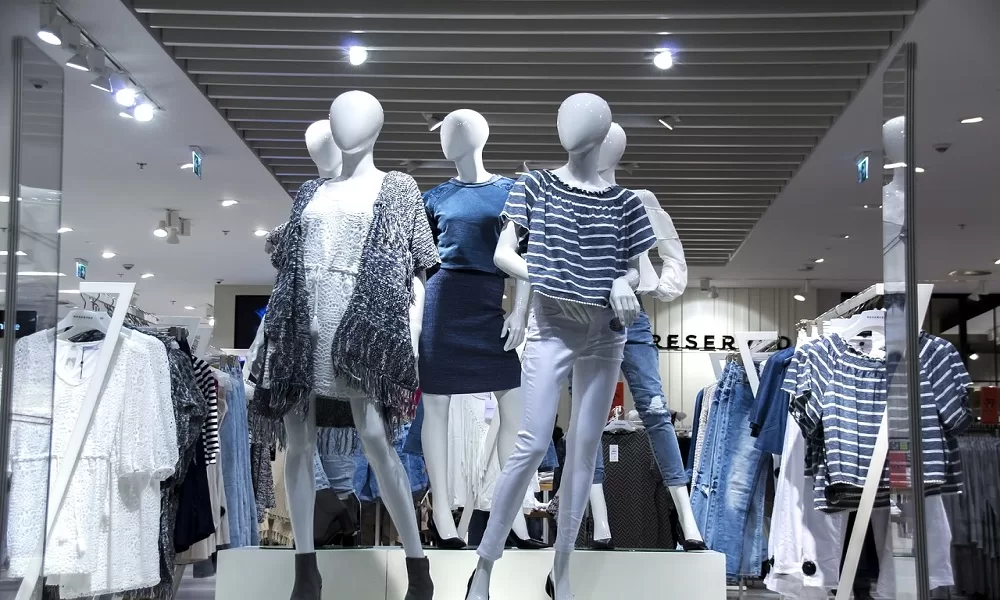Understanding Apparel: The Importance of Fabric Options in Your Closet
The selection of fabric in clothing plays a pivotal duty in both visual appeals and performance. Different materials supply differing degrees of breathability, comfort, and longevity, directly influencing the user's experience. Understanding these subtleties can boost one's wardrobe markedly. Yet, many forget just how these choices can impact not just individual design, however likewise sustainability. What material choices could redefine your closet and straighten it with both design and obligation?
The Function of Material in Fashion and Capability

Common Textile Types and Their Attributes
When choosing garments, recognizing the attributes of common fabric kinds is vital for making notified choices. Cotton, a widely-used natural fiber, is known for its breathability, soft qualities, and adaptability, making it appropriate for informal wear and everyday garments. Bed linen, one more all-natural option, boasts outstanding moisture-wicking homes and a distinctive texture, ideal for cozy climates.Wool, commonly preferred for its warmth and sturdiness, differs in fineness; merino woollen is soft against the skin, while coarser types are utilized for outerwear. Artificial textiles like polyester and nylon supply sturdiness and resistance to creases, making them preferred for activewear and travel garments. Finally, blends, which integrate synthetic and natural fibers, can improve performance while keeping comfort. By acknowledging these material attributes, people can choose clothes that lines up with their way of life and aesthetic choices.
Breathability and Comfort: Picking the Right Fabrics for Various Climates
Choosing the ideal textiles for various climates can greatly boost convenience and overall wearability. Breathable products are essential in hot environments, as they permit air circulation and dampness dissipation. Fabrics such as cotton, linen, and moisture-wicking synthetics successfully attract sweat far from the body, maintaining the wearer cool and dry. Conversely, in cooler environments, thicker materials like woollen or fleece supply insulation while retaining breathability, guaranteeing heat without overheating.Additionally, the option of fabric weight plays an essential role; light-weight materials are more effective for summer season, whereas heavier options are suited for winter wear. Recognizing the distinct residential or commercial properties of each fabric allows individuals to dress properly for differing climate problems. Inevitably, selecting comfy and breathable materials customized to details climates can greatly enhance everyday comfort and boost the overall experience of using garments.
Resilience and Treatment: How Textile Impacts Longevity of Your Closet
Choosing the right materials can considerably impact the sturdiness and care needs of a closet. Fabrics such as cotton and polyester are known for their resilience and ease of maintenance, making them excellent for everyday wear. On the other hand, delicate products like silk and lace need even more cautious handling and specialized cleansing approaches, which can boost the moment and initiative required for care. Branded Clothing.Durability is likewise influenced by the material's weave and finish; securely woven materials often tend to withstand damage better than loosely woven options. Furthermore, artificial blends commonly supply enhanced toughness, incorporating the most effective high qualities of several fibers.Understanding the treatment guidelines for each material is essential, as improper cleaning or drying can result in premature wear. Ultimately, selecting resilient materials can bring about a longer-lasting closet, lowering the frequency of substitutes and adding to an extra sustainable style choice
The Effect of Textile on Fit and Silhouette

Sustainable Material Options: Making Eco-Friendly Choices
The influence of material prolongs past fit and silhouette to encompass ecological aspects, triggering a growing rate of interest in sustainable fabric choices. Eco-friendly textiles, such as natural cotton, hemp, and Tencel, are gaining traction amongst consumers who focus on sustainability in their closets. These materials are frequently produced with less chemicals and water, reducing their environmental footprint.Additionally, recycled textiles, made from post-consumer waste, offer an innovative solution to the fabric sector's air pollution problem. Brands significantly embrace openness in their sourcing approaches, enabling customers to make educated decisions regarding their purchases.Choosing sustainable textiles not only sustains moral techniques yet additionally urges the garment industry to adopt even more liable production techniques. As recognition of environmental issues increases, individuals are prompted to reflect on the long-term effect of their material options, cultivating a movement in the direction of a much more lasting and eco mindful approach to fashion.
Elevating Design: Just How Material Can Change a Clothing
While many may concentrate on shade and cut when choosing an outfit, the choice of textile plays a necessary duty in boosting design and enhancing overall appearance. Various products communicate distinct state of minds and messages; as an example, silk emanates luxury and sophistication, while denim offers an informal, kicked back vibe. The structure and drape of a material can drastically modify the shape, with structured materials giving a polished appearance and softer ones producing an extra fluid, relaxed aesthetic.Moreover, the weight of the fabric affects wearability across periods. Light-weight textiles like bed linen and cotton are suitable for summer season, while larger products such as wool and velvet offer warmth and style in cooler months. Understanding material residential or commercial properties, such as breathability and stretch, likewise equips individuals to make enlightened choices that enhance convenience without jeopardizing design. Eventually, the ideal material can change an attire from normal to remarkable, making it a vital consideration in any wardrobe.
Frequently Asked Questions
How Do I Identify the Material Material of My Garments?
To identify fabric material, one can check out care tags, conduct shed examinations for fiber identification, or get in touch with fabric examples. These methods assist differentiate products, discover this ensuring educated selections for clothing treatment and maintenance in day-to-day wear.
Can Material Selection Affect My Mood or Confidence?
Textile option can substantially impact a person's mood and self-confidence. Branded Clothing. Specific materials may evoke sensations of comfort or style, while others can feel restrictive or uncomplimentary, ultimately affecting self-perception and emotional well-being throughout the day
What Fabrics Are Best for Sensitive Skin?
For individuals with sensitive skin, natural fabrics like cotton, bamboo, and bed linen are typically suggested. These materials are breathable, hypoallergenic, and less likely to create irritation, making them appropriate selections for convenience and skin health.
How Do I Effectively Laundry and Treatment for Different Fabrics?
To properly care and wash for different textiles, one should think about each material's certain demands, consisting of temperature level setups, cleaning agents, and drying out approaches, making certain long life and keeping the material's initial high qualities for perfect use.
Are There Specific Fabrics for Athletic or Performance Wear?
Sports or performance wear often uses fabrics such as nylon, spandex, and polyester. These materials are designed for moisture-wicking, breathability, and adaptability, improving activity and convenience throughout exercises while offering durability and support. On the other hand, in colder climates, thicker materials like wool or fleece provide insulation while maintaining breathability, ensuring heat without overheating.Additionally, the selection of material weight plays an important duty; lightweight materials are better for summer season, whereas much heavier choices are matched for wintertime wear. In contrast, fragile materials like silk and lace need more careful handling and specialized cleansing techniques, which can enhance the time and effort required for care.Durability is additionally affected by the textile's weave and surface; snugly woven textiles have a tendency to stand up to wear and tear better than loosely woven alternatives. In comparison, stiff textiles can restrict movement but provide a traditional, polished look.Moreover, the thickness and appearance of the textile can influence the aesthetic perception of body form. The impact of fabric extends beyond fit and silhouette to encompass environmental factors, motivating an expanding interest in lasting material choices. The structure and drape of a material can dramatically modify the shape, with structured materials offering a refined look and softer ones creating an extra fluid, kicked back aesthetic.Moreover, the weight of the textile affects wearability across seasons.